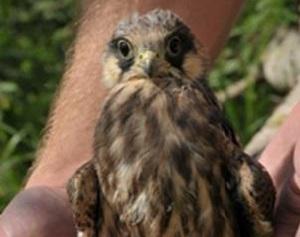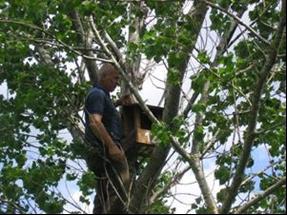Our project will survey and help marginal and declining Red-footed Falcon population in Serbia to survive by setting up a nest boxes for breeding, conservation of colony sites and strong campaign among local stakeholders.

Red-footed Falcon Falco vespertinus is small migrant falcon breeding in Eastern Europe and much of Asia. It breeds very often in colonies, comprising several to several hundred pairs and very often occupies former colonies of Rook Corvus frugilegus. It also breeds solitary, in abandoned Corvidae nests. Red-footed Falcon population underwent large decline between 1970 and 1990. Throughout the E Europe population fluctuates or declines, but the reasons for that are still unclear. It is also the case in Serbia. There is evidence that the biggest colonies have disappeared and that more pairs breed solitary. There are two presumed threats to local population: weather conditions during the fledgling period and cutting of trees with nests. If period of extremely cold and wet days occur when chicks are in very small, they very often die and breeding success is low. Red-footed Falcon, as dispersive breeder, often settling close to villages and farms, on the other hand, can not be effectively conserved by designation of protected areas. Directed conservation measures are required for all particular colonies, where cutting of trees should be prevented and Rook (very unpopular crow species in Serbia!) nest preserved. There is urgent need for that action in Serbia.

Our project will comprise:
1. Survey of all pairs of Red-footed Falcon in Serbia, survey of ecological factors in their colonies (or around individual nests), publishing these information in our journal Ciconia and making a solid base for further studies. This will be done by field work of survey teams between May and August 2010.
2. Conservation of all colonies (bigger then 2 pairs) by setting up 200 breeding boxes which are expected to improve breeding conditions: prevent chick starvation by environmental factors and prevent nest destructions. On the biggest colonies information plates will be installed using active assistance and participation of local community in settlements closest to the colonies. This will be done between April and October 2010.
3. Strong media campaign in breeding grounds and on national level aimed to popularize Red-footed Falcon as a flagship-species for preservation of endangered steppe habitats in Serbia. This will be done throughout the project period.